Screw juicers are methodically gaining a place on the market from classic centrifugal ones due to the higher quality of juice extraction. Kitfort KT-1125 with a horizontal squeeze claims leadership among its own kind: the manufacturer’s website says that it gently squeezes the maximum possible amount of juice from fruits, vegetables and herbs at low speeds, preserving all vitamins, amino acids and minerals. According to Kitfort, 85-115 rpm is the optimal screw speed for cold pressing. We cannot measure the amount of nutrients in the juice, but we will evaluate its organoleptic properties and the pressing process itself.
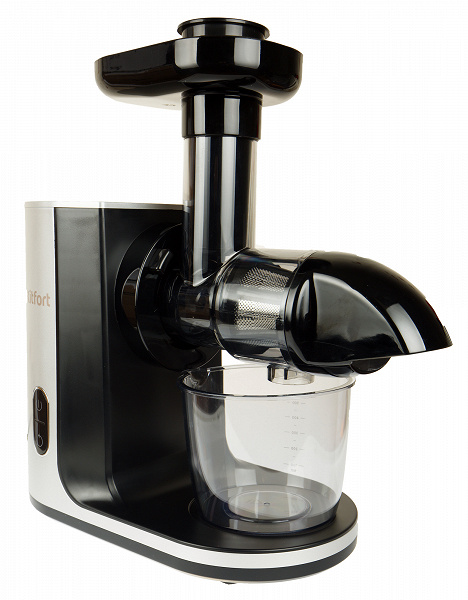
Characteristics
| Manufacturer | kitfort |
|---|---|
| Model | KT-1125 |
| Type | horizontal auger juicer |
| Country of Origin | China |
| Warranty | 1 year |
| Service life * | 2 years |
| Declared power | 150 W |
| Case color | black, silver |
| Main nozzle material | plastic |
| Screw material | ultra-strong plastic, metal |
| Filter material | stainless steel, plastic |
| Control | electronic |
| Screw speed | 85-115 rpm |
| Operating modes | one speed mode and reverse |
| Protection | from improper assembly and overheating |
| Additional accessories | cleaning brush |
| Juicer opening dimensions | 4.3×4 cm |
| Juice/pulp container capacity | 650/1000 ml |
| The weight | 3.6 kg |
| Dimensions (W×H×D) | 344×344×155 mm |
| Network cable length | 1.2 m |
| Retail offers |
* Contrary to common misconception, this is not the period after which the device will definitely break. However, after this period, the manufacturer ceases to bear any responsibility for its performance and has the right to refuse to repair it, even for a fee.
Equipment
I recognize the sweetheart by the box: Kitfort is true to tradition. On a black background – a vector image of the device, and in the upper left corner – a purple insert with a slogan. The sides provide information about the technical characteristics and advantages of the juicer. The package does not come with a carrying handle.
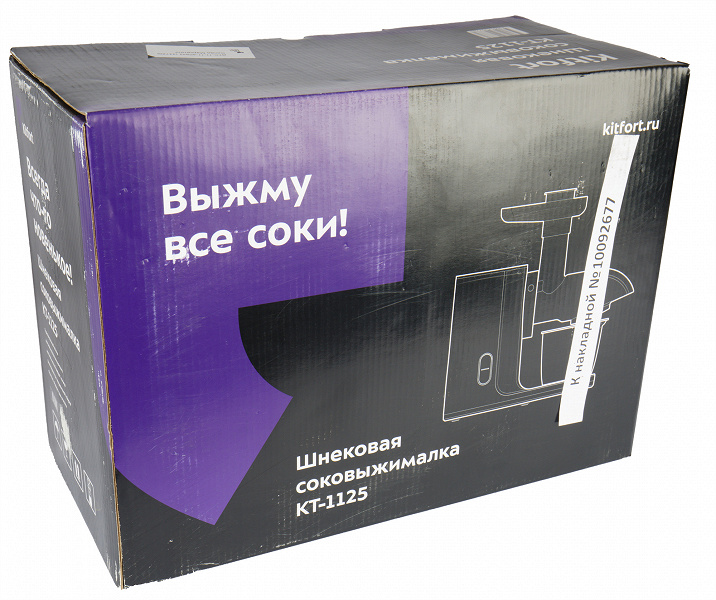
The instrument and its accessories are secured with two vertical molded cardboard tabs. Opening the box, inside we found:
- motor block
- wringer block
- filter
- screw
- clamp with o-ring
- juice and pulp containers
- pusher
- tray
- cleaning brush
- instruction manual, warranty card, promotional material and magnet
At first sight
Visually, yes, in principle, and functionally, the device is very similar to a meat grinder. A squeeze block stuffed with an auger and a filter is attached to the silver-black body, the juice flows into the container from below, and the cake comes out of the hole in the clamp. The motor block is dressed in a matte plastic that is pleasant to the touch.
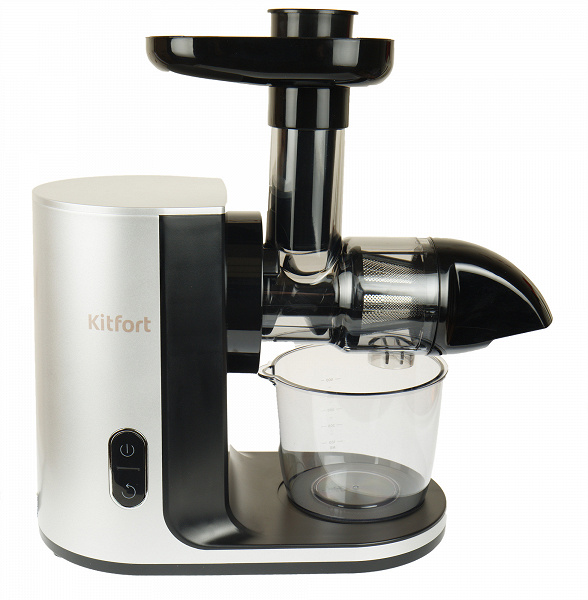
The wringer block is transparent – it will be possible to watch what is happening with vegetables and fruits live. The weighty auger looks ready to handle the toughest of raw materials. The stainless steel filter cells seemed large to us. In the sense that we have seen even smaller ones. Let’s see how much pulp will be in the juice.
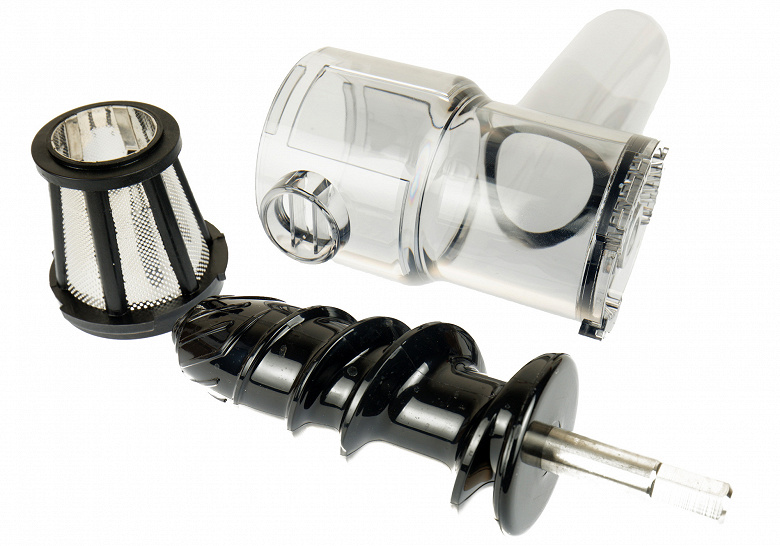
Having collected all the elements together, we realized that we would have to load the products quite a bit: the neck is very narrow and there is less space in the cell than on Palace Embankment on a white night.

This design is secured by a clamp with a rather narrow, about a centimeter, hole for the exit of the cake.
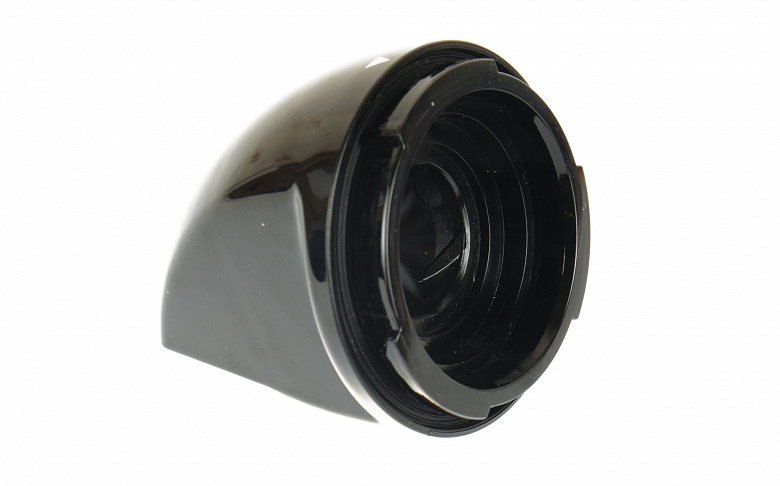
An empty wringer block is inserted into the motor block at an angle of about 30 ° C and secured by turning it counterclockwise until it clicks, then the auger, filter and clamp are already installed in it. To disassemble the juicer, just press the button on the left and turn the squeezer block clockwise.

At the bottom of the case there are ventilation holes and a nameplate with technical information. The device stands on six rubberized legs.
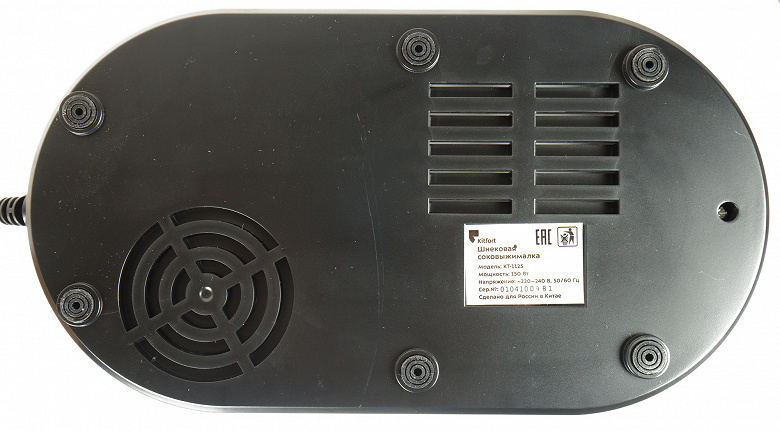
Containers for juice (650 ml) and for cake (1000 ml) are made of the same material as the wringer block – it does not look very durable. Everyone has a nose. The juice container has marks (from 100 to 500 ml in 50 ml increments). The glasses are the same shape, so one fits into the other, saving storage space. The tray and pusher are made from the same durable black plastic as the clip. The tray is so small that it makes no sense to place food on it – it’s easier to immediately throw a piece into the neck.
The brush has two working surfaces. One is wide, resembling a toothbrush, the second – with only six tufts of bristles – for cleaning hard-to-reach places.

Kitfort KT-1125 looks not only stylish, but also reliable. All parts are perfectly fitted, connect and disconnect without the slightest effort.
Instruction
The instruction manual is written in Russian. In the introductory article, the principle of operation of screw juicers is described in detail. There are plenty of illustrations in the ‘How the Juicer’ and ‘Setting Up and Using’ sections so the information is easy to digest and remember.

The manual has a special section “Tips”, which mentions many of the nuances of working with the device and the features of different products. It is worth carefully reading the entire text at least once: each chapter contains useful information, having which you will ensure the long service life of Kitfort KT-1125.
Control
The control panel is represented by two buttons, the purpose of which is easy to guess even without instructions. The power button starts and stops the rotation of the auger (Kitfort KT-1125 has one speed). Below is the reset button. It is not fixed, so to eliminate the jam in the chamber, you need to keep it pressed for a couple of seconds. You can turn on the reverse for a maximum of five seconds and only after the auger has completely stopped.
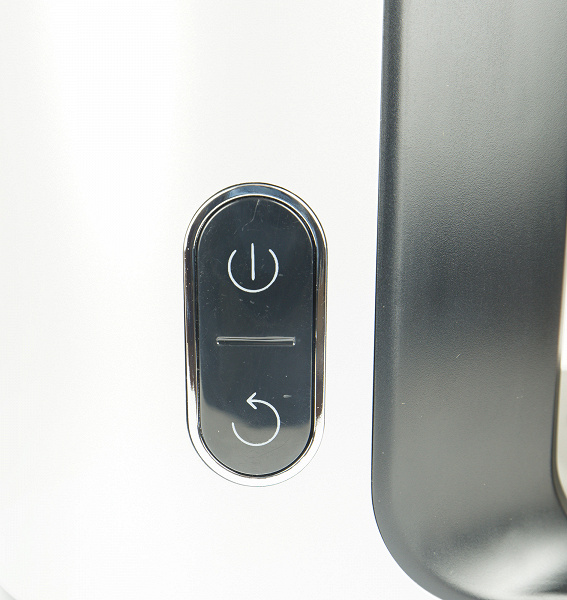
Exploitation
Before testing, we washed all the elements of the device that come into contact with food, and wiped the body with a damp cloth.
This juicer is not intended for juicing beets, carrots and sugarcane, nor should it be loaded with ice or frozen foods.
The Kitfort KT-1125 works slowly, we even noted for ourselves the calming effect of watching the slowly rotating auger. And yet, in terms of speed, its result was far from the worst among the juicers we tested.
And in terms of efficiency, the device quite a bit did not reach the top five. We are sure that oak winter cabbage let him down in the overall standings. It happens that a lot of juice remains in the cake, but not in this case. We did not begin to prepare either cabbage pancakes or carrot cake from production waste – with the same success it would be possible to knead the dough based on sand. All juice disciplined flowed into the container intended for it.
It is better to cut the products into long slices: the auger easily grabs them, quickly breaks them and sends them to the filter. Square pieces may get stuck in the neck, and you will have to press on them with a pusher.
In most cases, the Kitfort KT-1125 is very quiet. While processing grapefruits, tomatoes and carrots, we didn’t even have to turn up the volume on the laptop to follow the plot of the series. But apples and cabbage creaked deafeningly. If we hadn’t studied the instructions, we would have thought that these were the death screams of a juicer. It turned out that such sounds are made by starchy fruits. Kitfort advises to let the apples ripen so that the starch is converted to sucrose, and to squeeze the juice out of them in peace and quiet.
The juicer is assembled in a few seconds and disassembled just as quickly. This process is not only fast, but also extremely simple. But even if you did something wrong, thanks to the protection against incorrect assembly, it will not turn on. And the manufacturer also provided for the possibility of overheating of the motor and provided the device with an automatic shutdown after 20 minutes of continuous operation. But it is better not to wait for this moment and make sure that the Kitfort KT-1125 does not work for more than 10 minutes in a row. After this time, the device should rest for 20-30 minutes.
Care
The juicer is easy to maintain, the main thing is to wash the parts immediately after use. Unwashed and dried particles of vegetables and fruits are the key to reducing the effectiveness of the device. The filter should be washed with a brush. If the residue of the raw material does not lag behind, it can be soaked in hot soapy water before subsequent cleaning. The body can be wiped with a damp or dry cloth.
Our measurements
The power of the Kitfort KT-1125 never reached the declared power during testing. The maximum recorded by us is 110 W when squeezing juice from cabbage. During the processing of grapefruits, the power did not exceed 60 watts. On the reverse, the wattmeter showed 29 watts.
practice tests
Required Test #1 (Granny Smith apples)
We cut the apples into 8 slices each: the quarters did not fit into the loading hole.
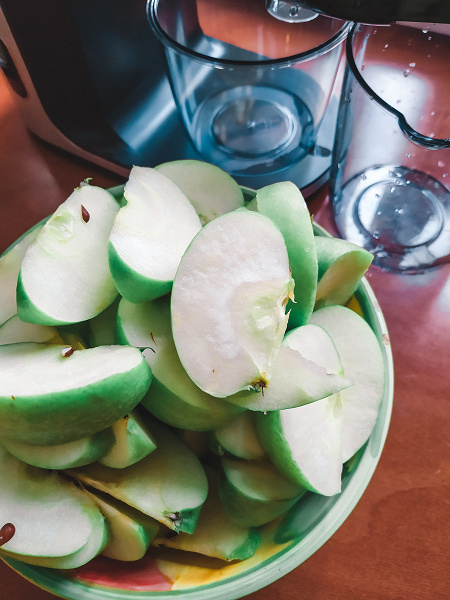
Juice extraction went with a creak – literally. The device made a heartbreaking creak, but the juice was squeezed out regularly, without stopping. The auger did not always capture the slices, so I had to help him with a pusher. A little foam came out, although in the photo the cap looks impressive due to the distorted perspective. Juice without perceptible pulp, but translucent, very fragrant and vigorously sour. The cake is very dry and dense – I had to work hard to pick it out of the channel in the clamp-spout.

It took the juicer 3 minutes and 45 seconds to process a kilogram of apples, she strained 832 grams of juice, that is, 83.2% of the mass of raw materials.
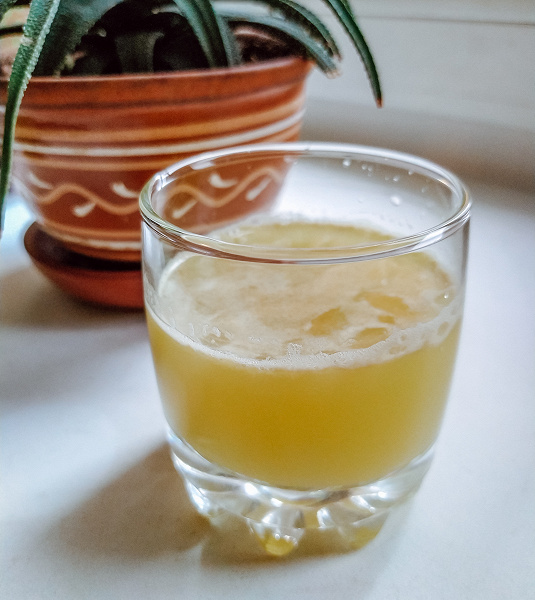
Required Test #2 (Pink Grapefruit)
Grapefruit peeled and white films, again weighed exactly one kilogram. Divide the fruits into slices.
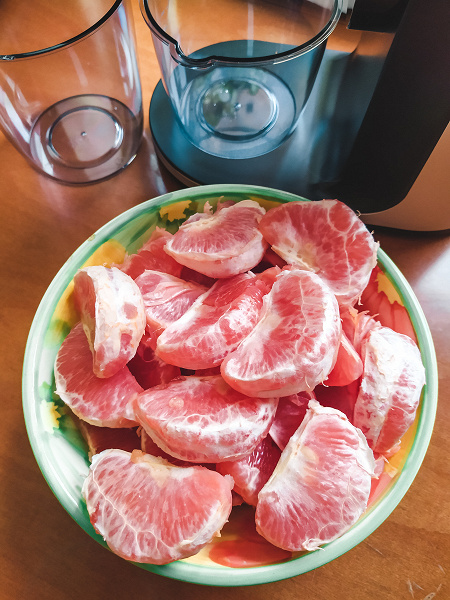
This time there was no creaking, the auger quickly dragged the slices to the filter, but the raw materials had to be loaded intermittently: the juice accumulated in the chamber and strove to splash out through the neck, so we had to wait until it drained into the container. The juice is again translucent, without pulp, and again vigorous.
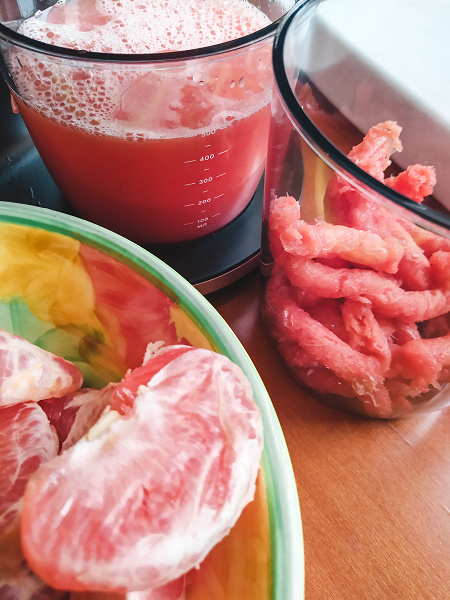
In 1 minute 56 seconds we got 710 ml of juice, that is, the yield is 71%. The cake is wet, but there is practically no juice in the container, that is, losses are minimal. The result is wonderful.
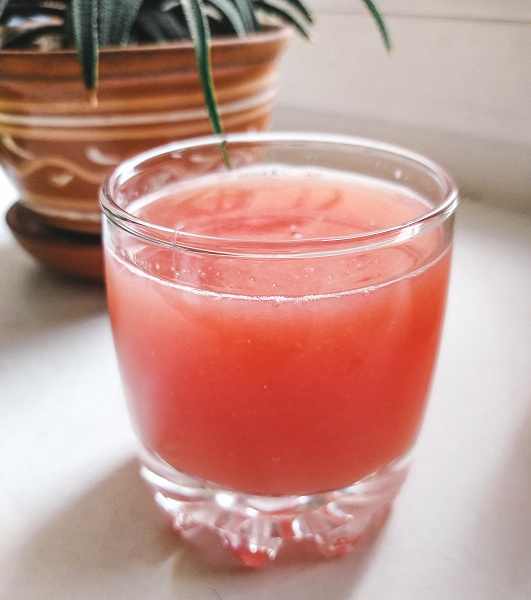
Mandatory test No. 3 (carrots)
In fact, the instructions forbid squeezing juice from carrots, but we at iXBT love the risk, and even more love our methodology, developed over the years, so we cut the root vegetables into long slices and started praying.
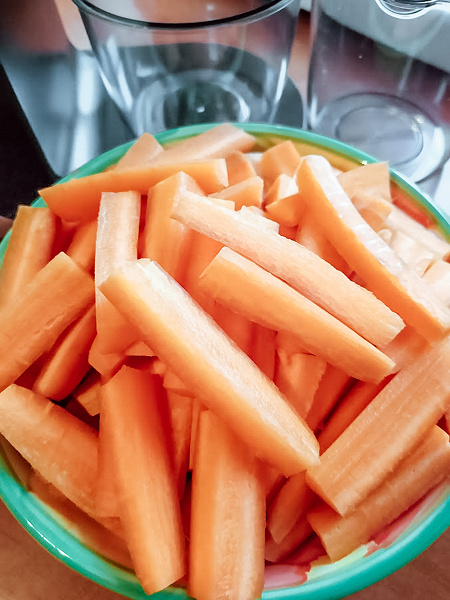
Contrary to expectations, the juicer did not creak, although carrots cannot be called a soft fruit – only the crackling of slices being broken by the auger was heard from the inside. As a result, we have a dense orange juice with a small amount of pulp. The cake is so dry that it disintegrates with a light touch. It happens that we use the waste from this dough for carrot cake, but this time we sent the contents of the container to the bucket – we can’t give it a second life.

Juice from a kilogram of carrots Kitfort KT-1125 squeezed 2 minutes 50 seconds – 472 grams came out.
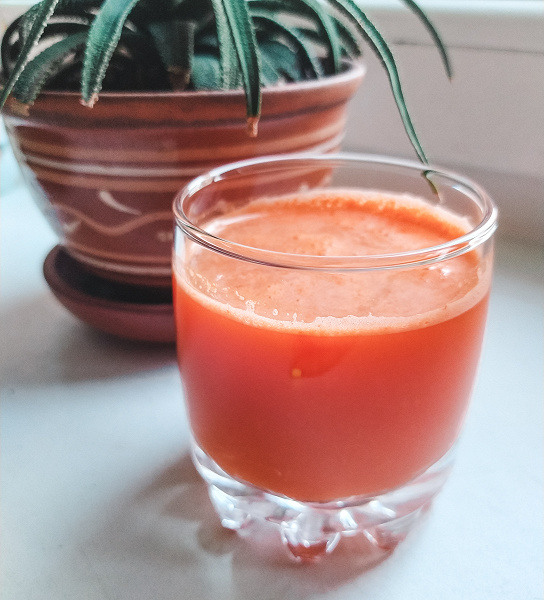
Mandatory test No. 4 (cabbage)
A kilogram of cabbage was cut randomly, focusing on the size of the feed opening.

The juice extraction was again accompanied by a nightmarish squeak and generally dragged on – the cabbage was captured by the auger with grief in half, I had to actively work with the pusher and turn on the reverse once. However, these are the features of the raw material – the pieces of cabbage in the neck were scattered into separate sheets and either tamped in the chamber, or went into free flight along the neck. As a result, cloudy juice appeared in the container, although the pulp was not felt in it. The ratio of foam and juice is visually approximately 1:2. There was a strong smell of cabbage in the laboratory.
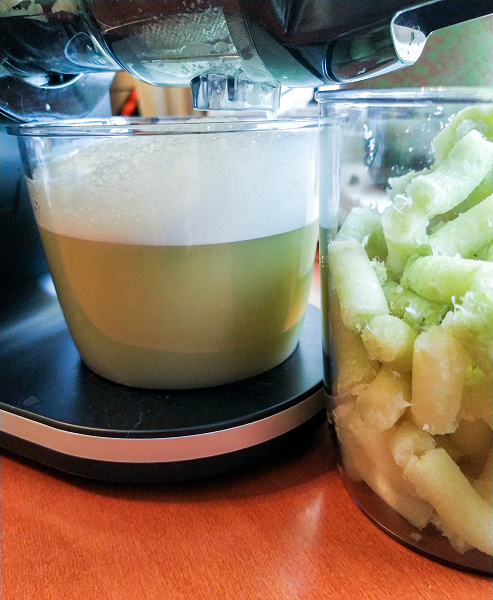
The juicer creaked for 7 minutes 59 seconds, giving out a total of 472 grams of juice.
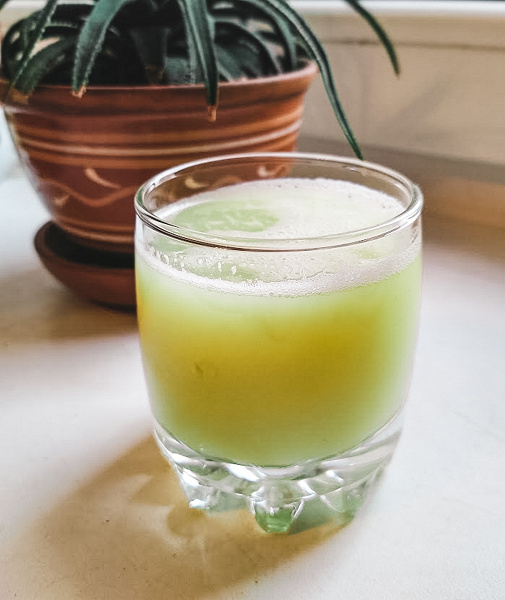
Summing up the results of testing according to the iXBT.com method
The average values of speed and efficiency according to the results of four mandatory tests for the Kitfort KT-1125 juicer were, respectively, 4 minutes 7 seconds and 621.5 grams.
Traditionally, we check the results of all the juicers we tested . To get into the top 5 in terms of efficiency, Kitfort KT-1125 lacked only 3 grams, so we are content with sixth place. The speed of the juicer seemed quite low to us, but everything is known in comparison: 4 minutes 7 seconds is an above average result (4 minutes 26 seconds).
tomatoes
We cut half a kilo of tomatoes into thin slices and fed Kitfort KT-1125.
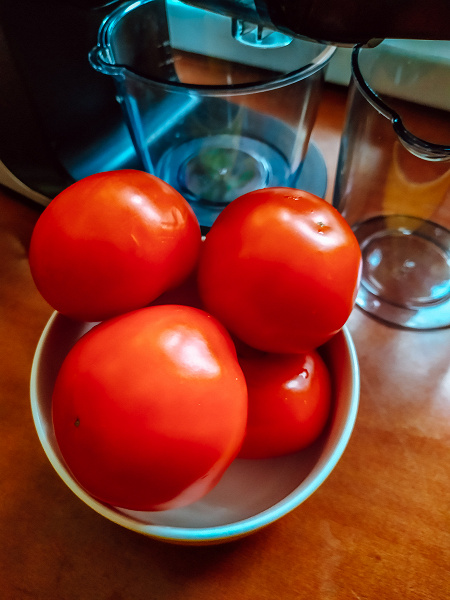
In a minute we got 310 grams of juice with a thin layer of foam.
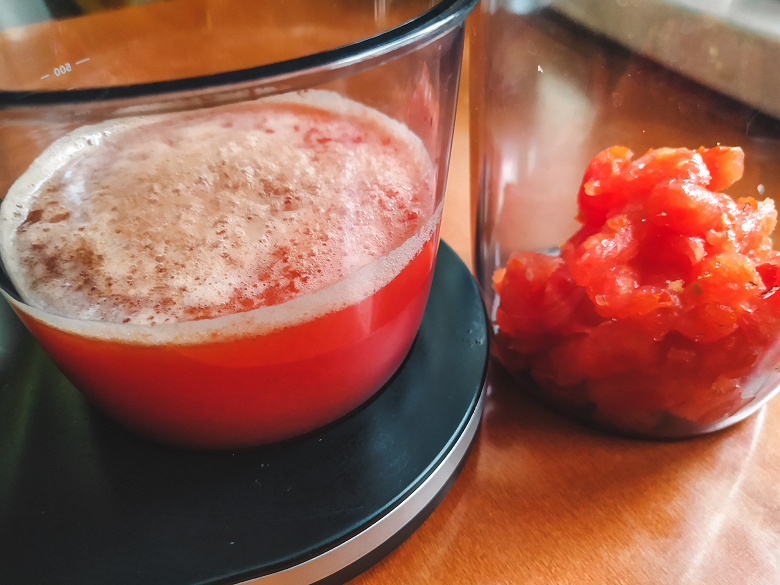
The cake is wet, but in 15 minutes at the bottom of the container glass of juice is only a teaspoon.

The juice itself is pulpy, but not thick. The taste cannot be called bright, but such are our winter tomatoes.
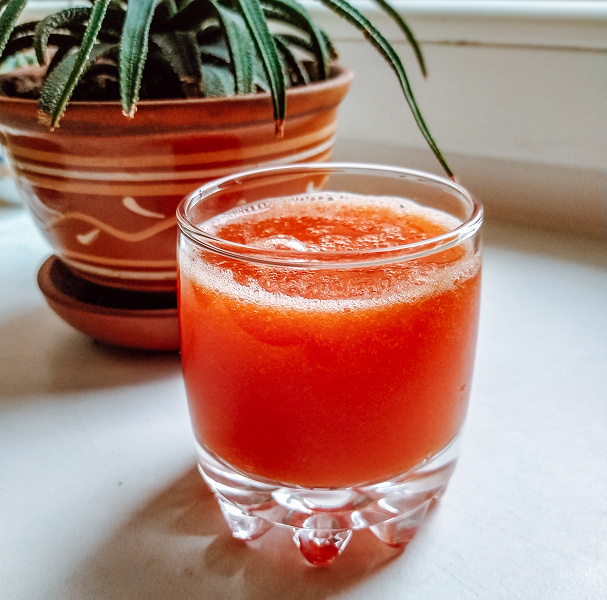
Result: excellent.
Cucumbers and greens
More vegetables for the vegetable god! Cucumbers, cut into thin slices, supplemented with parsley and dill.

From 510 grams of raw materials, 340 grams of juice were obtained. Cucumber cake is wet, but does not flow, and the greens are compressed into dense yellow sausages. After disassembling the auger, we did not find the stems wound around it – everything was worn to dust.

The juice of the color of June foliage is translucent, the pulp is not felt in it, but particles of dill and parsley are visible. Cucumbers and greens were taken out of the refrigerator right before squeezing, and the juice was ice cold – confirmation that the products in our juicer do not heat up, that is, they retain their properties as much as possible.

Result: excellent.
findings
The Kitfort KT-1125 auger juicer excelled during testing, carefully and efficiently squeezing juice from all the products offered to it. The maximum amount of juice fell into the container intended for it, the cake remained dry or slightly moist – even after processing very juicy fruits and vegetables.
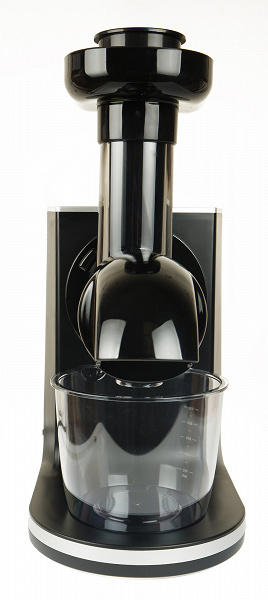
The only thing that we did not like was a very loud creak during the processing of some products. But Kitfort blames the starch in the raw material for this.
Pros :
- efficient
- products do not heat up during the spinning process
- easy to assemble, disassemble and wash
Cons :
- squeaks loudly when processing tough and starchy foods




